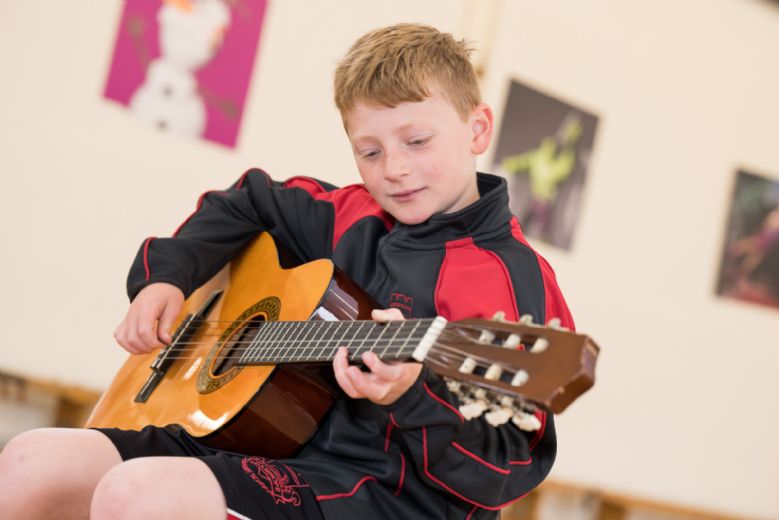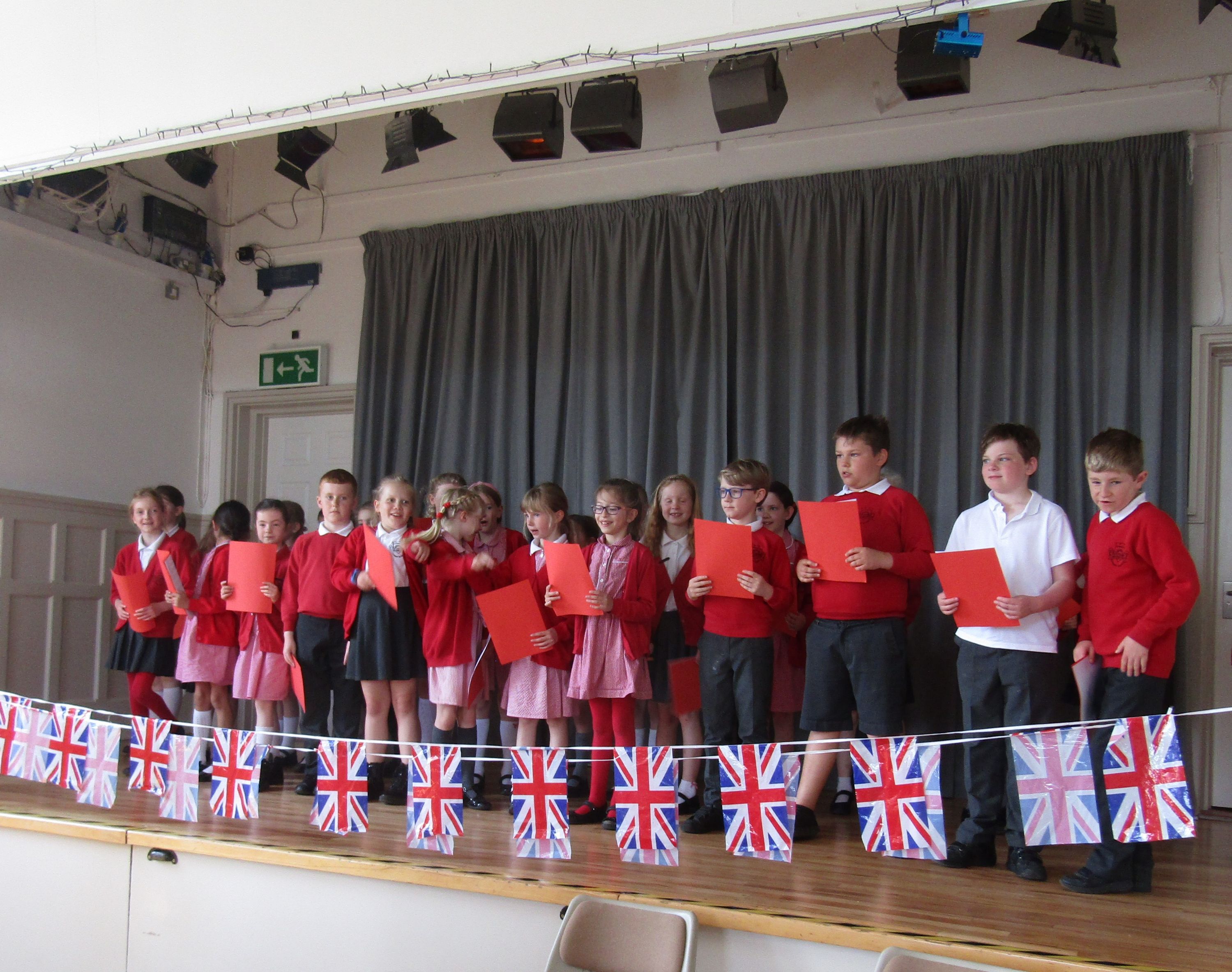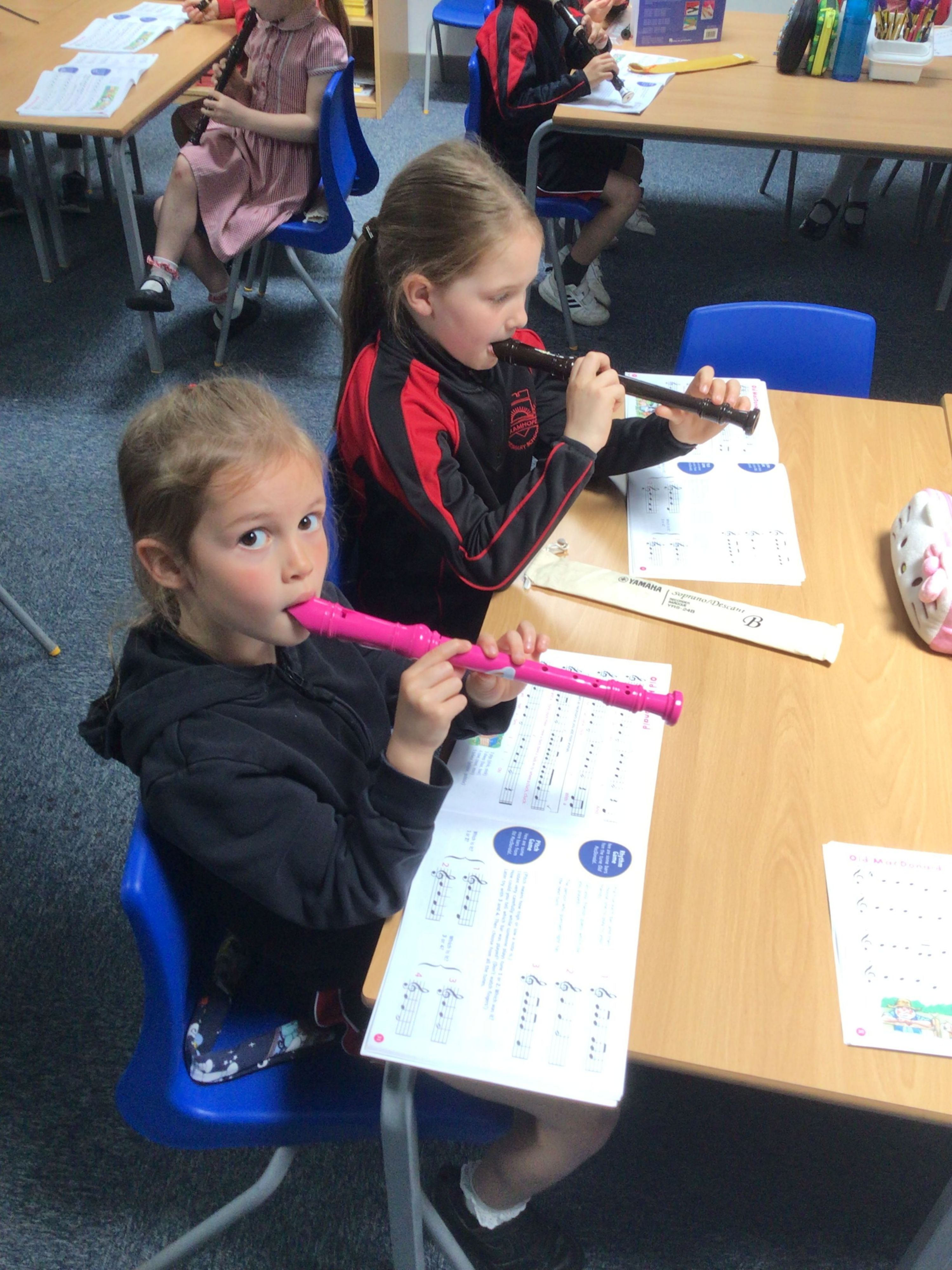Music
Welcome to Music: 
Subject Coordinator: Mrs McNaboe
Contact: hannah.mcnaboe@bramhopeprimaryschool.co.uk
We encourage children at Bramhope to be exposed to music from a young age and their enthusiasm is captured throughout the music lessons. Music enables children to develop their teamwork skills, self-confidence, empathy, communication skills and intellectual curiosity.

what makes music different at bramhope?
In addition to meeting National Curriculum requirements, my subject is also influenced by, and contributes to, our school vison/our school motto. Belong; Be your best; Be Bramhope
Belong:
- Children have worked collaboratively to produce lyrics for the new whole school song.
- Children work individually and enjoy sharing their ideas with the class.
Be Your Best:
- Challenging themselves to include a range of notes in their compositions.
- Appraising musical genres they are not familiar and sharing detailed answers.
- Working with various children and in varying group sizes.
Be Bramhope:
- Practising the school song in key stages and as a whole school.
- Participating in lunchtime music clubs such as recorder club and choir.
- Music visits in the wider community such as our link with Bramhope Dementia ‘Care for a Cuppa’.
Music gives every child a chance to stand out as confident and ambitious. Music is a life-long skill and everyone can access the subject and enjoy the tasks. It is important for all children to access our broad curriculum.
what do lessons look like at bramhope?
Core knowledge and skills taught, practised and revisited so that the learning is durable.
At Bramhope, the teaching of music follows the National Curriculum programme of study, but is tailored to reflect the interests of our children.
Teachers are required to have excellent subject knowledge and the sharing of expertise, resources and current curriculum knowledge helps to achieve this. The music curriculum concentrates on one area each term to focus on the key elements; duration, pitch, dynamics, timbre and texture, tempo and structure. Singing, listening, composing and performing are embedded into each term.
Each year group has a Music book where they collect evidence of pupil’s learning. The book stays in the same year group for two years. The main aim of the books is to show progression of skills throughout the school. We also use the Charanga scheme throughout school to embed the musical skills that are required; the scheme allows the children to have regular access to the music terminology. A composer timetable also runs alongside the units of work to ensure children are listening to and appraising a range of genres.
Each key stage has a box of percussion instruments to practise their performance and rhythmic skills. Additional instruments will be purchased in the next academic year. In KS2 children also have the opportunity to have music lessons with the peripatetic teachers. Children have the opportunity to learn various instruments: Keyboard, Piano, Drums, Guitar, Violin, Oboe, Clarinet, Flute and singing lessons.
For children with SEND, access to lessons is differentiated, whilst the planned curriculum content is retained. Children are supported to succeed through:
- Breaking down tasks into smaller chunks to achieve and prioritising understanding over task completion (for example, simpler songs and rhythm routines).
- Giving sufficient time to process instructions, or adapted verbal or written instructions
- Scaffolded questions from adults and orally rehearsing thoughts with an adult.
what do we mean by progress?
By the end of Key Stage 1, children will be able to:
- Sing simple songs, chants and rhymes.
- Begin with simple songs with a very small range.
- Sing a wide range of call and response songs.
- Start to use musical terms to describe music from a variety of genres.
- Create musical sound effects and understand the difference between rhythm and pitch patterns.
- Develop musicianship by comprehending pulse/beat, rhythm and pitch.
By the end of Key Stage 2, children will be able to:
- Describe musical features of pieces and name the Italian terms such as allegro for fast and adagio for slow.
- Sing a widening range of unison songs of varying styles and structures.
- Perform in a group and with confidence.
- Listen to and appraise a variety of musical genres.
- Compose and improvise with music that has a beginning, middle and end.
- Read notes on a stave and comprehend the differences between simple note values.
Through the child’s learning journey at Bramhope, their musical skills and understanding are built on year by year, from performing simple rhythm patterns and singing basic melodies in KS1, to more advanced skills and understanding in KS2. Throughout all of this the child’s enjoyment of music is of paramount importance and provides an outlet for creativity which is essential for a child’s development. Children will also have the opportunity to foster their instrumental flare and use this as a form of expression. Children will participate in wider musical activities and opportunities for improved well-being and confidence will be increased.
what do we mean by assessment?
Music assessment is carried out in three ways; formatively, summatively and collecting music work to display in year group books.
Formative
Monitoring student learning and providing feedback during the lesson to improve their overall learning. This is carried out during the four strands of singing, listening, composing and performing.
We use light-touch formative assessment throughout the year, being precise about the knowledge and skills that are identified as most significant and worth recording. Information is then recorded in the music books to show and monitor progressing throughout the academic year.
Summative
Charanga is used at the end of each half term to evaluate student learning and their overall competencies at the end of a module. This encompasses all aspects of their musical learning:
- How many notes does this melody have?
- Is the tempo of the music fast or slow?
- Does the pitch change?
- Is the third note higher or lower than the first note?
The planning summarises key vocabulary (with agreed definitions), facts, and concepts. There are 15-20 questions in each quiz, which recap the prior terminology. This encompasses all of the strands: singing, listening, composing and performing.
Collection of Music work
Photos of our learning and examples of our musical theory work are stuck into our Music books. Each year group has a Music book to showcase their learning.
Curriculum documents & useful links


